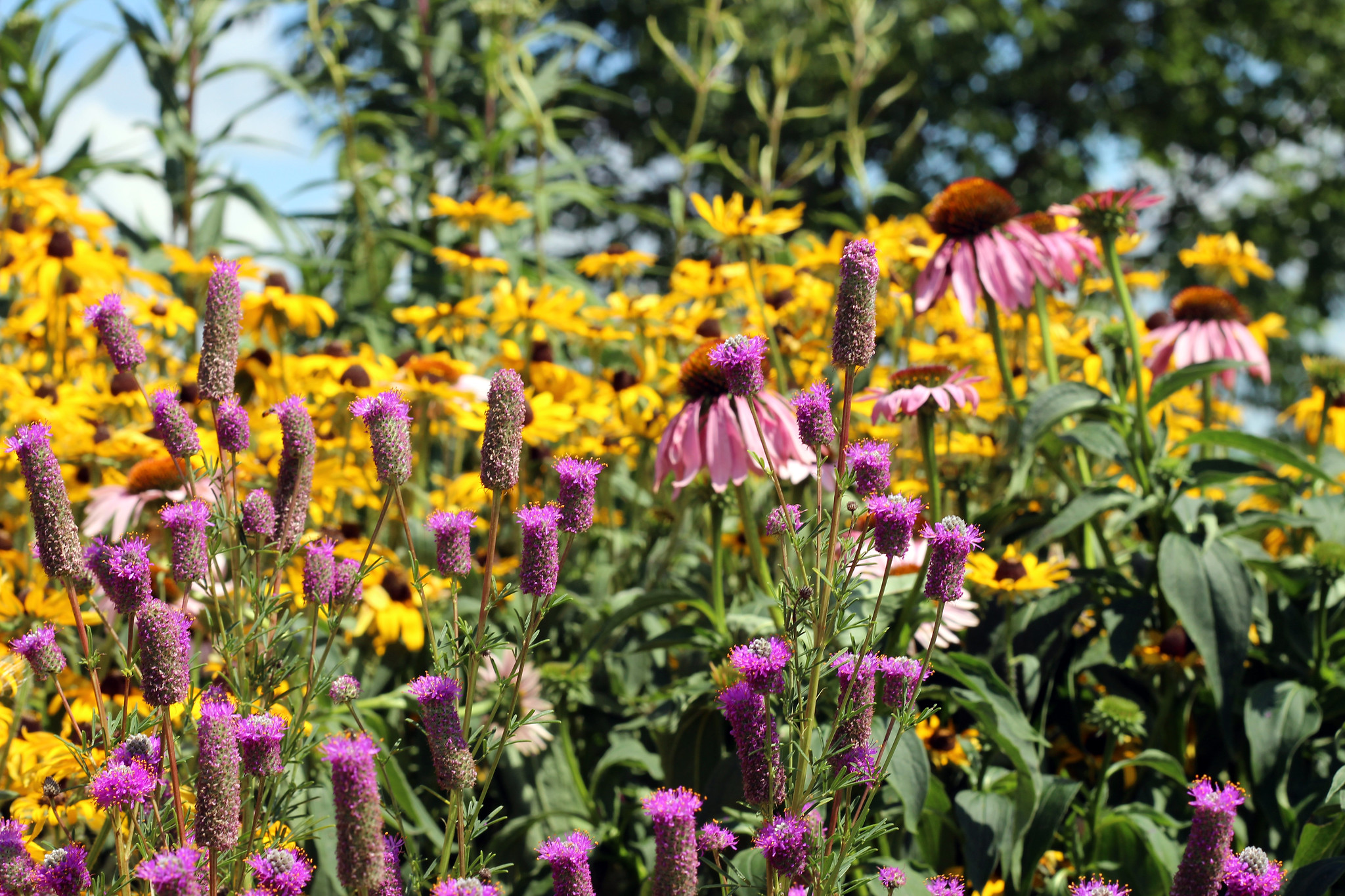How Pairing Plants Can Enhance Ecosystem Health
When we think of gardening, we often envision rows of vibrant flowers, lush greenery, and the gentle hum of pollinators at work. But did you know that the way we choose and pair plants can have a profound effect on the health of the ecosystems around us? One of the most powerful ways to support nature is through companion planting with native species.
As someone passionate about conservation and nature’s intricate connections, I’ve always found beauty not just in individual plants, but in how they work together to create harmony. Much like the arts, ecosystems thrive when elements are thoughtfully and intentionally brought together. Companion planting, particularly with native plants, does just that—creating a symbiotic relationship that nurtures the environment.
What is Companion Planting?
At its core, companion planting is the practice of pairing plants that work well together. These pairings can help with pest control, improve soil health, increase pollination, and even boost each other’s growth. It’s nature’s version of teamwork—plants working side by side, supporting one another in the same way that communities and ecosystems do.
When native plants are involved in companion planting, the benefits extend beyond the garden. Native species are uniquely adapted to the local environment, making them more resilient and sustainable. They don’t require the same inputs (like water and chemicals) that non-native species often do. By pairing them thoughtfully, we create an environment that is both beautiful and functional, while helping to restore balance to our ecosystems.
The Power of Native Plants in Ecosystems
Native plants are the cornerstone of healthy ecosystems. They provide food and shelter for wildlife, support pollinators, and play a critical role in preserving biodiversity. Unlike non-native plants, which can sometimes take over and disrupt the balance of local ecosystems, native plants have evolved alongside the creatures that depend on them. When we grow and support native species, we’re contributing to a web of life that has been building for centuries.
Take, for example, the humble milkweed. While often seen as a wildflower, it’s a vital plant for monarch butterflies, providing both nectar and a place for the butterflies to lay their eggs. By planting native species like milkweed alongside other natives, we create a habitat that supports these crucial pollinators, whose numbers have sadly dwindled due to habitat loss and pesticide use.
How Companion Planting with Native Species Can Benefit the Ecosystem
Pairing native plants together isn’t just about aesthetics—though native gardens are certainly beautiful! It’s about creating a balanced ecosystem where plants, insects, and animals can thrive together. Here are just a few ways companion planting with native species can improve ecosystem health:
Pest Control, the Natural Way
Instead of relying on pesticides, native plants can help deter pests naturally. Many native plants have built-in defenses—whether it’s a strong scent or the ability to attract beneficial insects—that protect both themselves and neighboring plants. For example, planting native marigolds near tomatoes can help reduce nematode populations, a common pest that affects tomato plants.
Soil Enrichment
Native plants often have deeper root systems than non-native varieties, which can help prevent soil erosion and improve soil structure. Their roots also allow for better water infiltration, keeping the soil moist during dry spells and reducing the need for supplemental watering. This deep connection to the land fosters healthier, more resilient soil, which benefits all plants in the area.
Supporting Pollinators
Native plants are vital for pollinators like bees, butterflies, and birds. By planting a variety of native species together, you create an environment that attracts a range of pollinators. Think of it like inviting a crowd to a party—all the right guests will show up, from the buzzing bees to the fluttering butterflies. Plants like coneflowers, bee balm, and goldenrod are all pollinator favorites that provide both nectar and pollen.
Increased Biodiversity
Pairing native plants together fosters biodiversity, which is key to maintaining a healthy ecosystem. A mix of native plants supports a wide variety of insects, birds, and other wildlife. By planting different species of native flowers, shrubs, and grasses, you are helping to sustain a variety of creatures who depend on those plants for food and shelter.
Resilience and Sustainability
Native plants are well-suited to their local environment, requiring less water and maintenance. By planting them together, you create a sustainable ecosystem that can weather changes in weather and climate. This means fewer resources spent on watering, fertilizing, or managing invasive species. It’s a quiet, resilient kind of gardening that aligns with the rhythms of nature.
Examples of Native Plant Pairings That Work Wonders
Pairing native plants is an art in itself—finding combinations that not only thrive together but also support the local wildlife. Here are a few successful pairings you can try in your own garden:
- Wild Bergamot & Black-eyed Susan: These two plants are a beautiful match, both in color and in function. Wild Bergamot (Monarda fistulosa) attracts pollinators, while Black-eyed Susans (Rudbeckia hirta) provide shelter for insects and add striking color to the landscape.
- Milkweed & Purple Coneflower: This pairing is a boon for pollinators, particularly monarch butterflies. Milkweed provides a place for monarchs to lay their eggs, while Purple Coneflowers offer nectar for a variety of bees and butterflies.
- Goldenrod & Asters: Goldenrod (Solidago spp.) and Asters (Symphyotrichum spp.) bloom at the same time in late summer and fall, providing vital food for pollinators when other flowers begin to fade.
Tips for Successful Companion Planting with Native Species
If you’re ready to give companion planting with native species a try, here are a few tips to guide you:
- Research Local Plant Communities: Understand which plants grow naturally together in your region. Local plant guides or a native plant society can help you make informed choices.
- Consider Growth Habits: Ensure that your companion plants have compatible growth habits. Tall plants should be paired with shorter ones to avoid shading out the smaller plants.
- Support Pollinators: Choose plants that attract a variety of pollinators—bees, butterflies, and birds all need different types of plants.
- Be Mindful of Water Needs: Pair plants with similar water and soil needs to reduce maintenance.
- Avoid Invasive Species: Stick to true native plants to avoid introducing invasive species that could harm the local ecosystem.
Small Acts, Big Impact
Companion planting with native species isn’t just a way to beautify our gardens—it’s a commitment to nurturing the land and creating sustainable, thriving ecosystems. Every plant we add to our spaces, every small change we make in our gardens, can have a ripple effect that benefits the natural world around us.
The good news is, it doesn’t take grand gestures to make a difference. By planting native species and thoughtfully pairing them together, you’re helping to create a sanctuary for wildlife, improve biodiversity, and restore balance to the land. Whether you’re just beginning your journey or you’ve been planting for years, each step you take is a meaningful one.
I encourage you to give it a try. Create your own native plant combinations, support pollinators, and watch as your garden—or farm, or even your backyard—transforms into a thriving ecosystem. We are all stewards of this land, and together, we can make a real difference.
FAQ: The Benefits of Companion Planting with Native Species
Companion planting with native species involves pairing plants that naturally support one another in the ecosystem. These plants work together to improve soil health, attract pollinators, provide pest control, and foster biodiversity. Native plants, in particular, are well-adapted to local environments, making them ideal for creating sustainable, resilient gardens.
Companion planting helps enhance ecosystem health by encouraging natural pest control, improving soil quality, supporting pollinators, and increasing biodiversity. Native plants, in particular, create balanced environments where plants, insects, and wildlife can thrive together.
Native plants are naturally adapted to the local environment, requiring less maintenance, water, and chemicals. They provide critical habitat for wildlife and pollinators, help preserve biodiversity, and contribute to sustainable ecosystems. Unlike non-native plants, native species don’t disrupt the local ecosystem.
Pest control: Native plants can naturally deter pests and attract beneficial insects, reducing the need for pesticides.
Soil enrichment: Many native plants have deep root systems that improve soil structure, reduce erosion, and help with water retention.
Pollinator support: Native plants attract various pollinators, such as bees, butterflies, and birds, which are vital for ecosystem health.
Increased biodiversity: By pairing different native species, you support a wide range of wildlife and plant diversity, enhancing ecosystem resilience.
Sustainability: Native plants require less water and maintenance, making them ideal for creating sustainable, low-maintenance gardens.
Wild Bergamot & Black-eyed Susan: Wild Bergamot attracts pollinators, while Black-eyed Susan provides shelter for insects.
Milkweed & Purple Coneflower: A perfect combo for monarch butterflies, with Milkweed providing a habitat for larvae and Purple Coneflower offering nectar.
Goldenrod & Asters: These late-blooming plants provide vital food for pollinators in late summer and fall.
Native plant pairings attract a variety of pollinators by providing both nectar and habitat. By choosing plants that bloom at different times, you can ensure that pollinators have a continuous food source throughout the year. Pollinators such as bees, butterflies, and birds rely on native plants for their survival, and companion planting encourages these vital species to thrive.
Research local plant communities to understand which species naturally grow together in your region.
Consider plant growth habits, pairing tall plants with shorter ones to avoid shading out smaller plants.
Support a variety of pollinators by selecting plants that attract bees, butterflies, and birds.
Match water and soil needs for plant pairings to reduce maintenance and promote healthy growth.
Avoid invasive species, as they can harm the local ecosystem.
Yes! Many native plants have deep root systems that help prevent soil erosion, improve soil structure, and enhance water infiltration. This creates healthier soil that supports a variety of plants and reduces the need for supplemental watering.
Start by researching native plants suited to your local environment and their natural companions. Focus on pairing plants with similar growth habits, water needs, and pollinator support. Try planting a mix of species to foster biodiversity and create a balanced, thriving ecosystem.
Absolutely! Native plants are well-suited to their local climates and require fewer resources such as water, fertilizers, and pesticides. By focusing on native plants, you create a more sustainable garden that works with the natural environment, requiring less maintenance and fewer chemical
Companion planting with native species fosters biodiversity by providing varied habitats and food sources for a wide range of wildlife. By planting a mix of species, you support a diverse population of insects, birds, and other animals, contributing to the health and resilience of the ecosystem.
Look for local plant guides, visit native plant nurseries, or consult a local plant society for recommendations. Choose plants that are adapted to your region’s climate, soil type, and growing conditions to ensure they thrive and contribute to a healthy ecosystem.
No! Companion planting with native species can be done in gardens of all sizes, from small backyards to large landscapes. Even a few well-chosen native plant pairings can make a big difference in supporting local wildlife and improving ecosystem health.
Avoid introducing non-native or invasive species into your garden, as they can disrupt the local ecosystem. Stick to true native plants that are suited to your region’s climate and conditions. Additionally, be mindful of plant spacing to ensure that taller plants do not shade out shorter ones.

